Instructional Series
Welcome to the English medium literacy instructional series teaching and learning resources for years 1 to 8.

- Gold
- Purple
- Magenta
- Yellow
- 3
- 2
- 4
- 1
- 6
- 4
- 5
- 8
- 7
- 3
- 1
- English
- Social Sciences
- Science
- Health and Physical Education
- Technology
- The Arts
- Mathematics and Statistics
- Non-fiction
- Fiction
- None
- Nature of science
- Geometry and Measurement
- Living world
- Planet Earth and beyond
- Nature of technology
- Physical world
- Number and Algebra
- Statistics
- Technological knowledge
- Material world
- Technological practice
- Engage with science
- Gather and interpret data
- Interpret representations
- Use evidence
- Articles
- Stories
- Poems
Search results
166 items - Showing 21 - 30
-
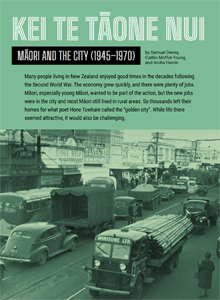
Kei te Tāone Nui: Māori and the City (1945–1970)
by Samuel Denny, Caitlin Moffat-Young, and Aroha Harris
The post-Second-World-War era in Aotearoa New Zealand saw one of the fastest rates of urban migration in the world, with Māori migrating to cities in large numbers to take advantage of new economic opportunities. The “golden city” offered much, but it came at a high price. Despite an unquestioned narrative in Pākehā communities that New Zealand’s race relations were world leading, Māori moving to the city encountered prejudice and discrimination at many levels. Māori responded to these challenges in multiple ways, for example, by establishing formal and informal groups that strengthened collective expression of Māori cultural values and practices. By gathering together to debate and take action on key issues, the seeds were sown for the modern Māori protest movement as well as the forging of a new urban Māori identity.
-
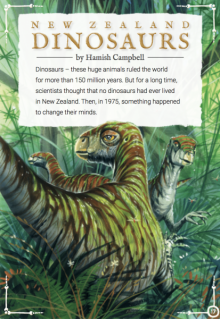
New Zealand Dinosaurs
by Hamish Campbell
illustrated by Spike Wademan
This engaging article explains what is known about the dinosaurs that once roamed New Zealand. It provides some background information on dinosaurs in general, including the most popular theory about why they became extinct. It also explains that for a long time, people believed no dinosaurs had ever lived in this country. Then it gives details of the dinosaur fossils found in various parts of New Zealand, which proved that idea to be wrong.
-

A New Zealand Crocodile?
by Sophie Fern
On a scorching hot day in 1989, near the small Central Otago town of St Bathans, a group of scientists were digging in the soil. What they would find would change our ideas about the animals that have lived in Aotearoa.
-
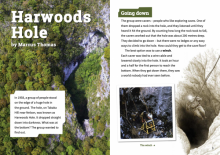
Harwoods Hole
by Marcus Thomas
In 1958, a group of intrepid cavers descended into Harwoods Hole, a huge vertical chasm on Takaka Hill. At the bottom, they discovered a spectacular environment, with beautiful stalactites and waterfalls. A month later, they discovered a second cave nearby. The cavers proved that the two cave systems were connected and created a way to travel between them. The themes of exploration and discovery make this article an enthralling read. It’s also an excellent introduction to the information texts students will be encountering more frequently as they progress through school.
-
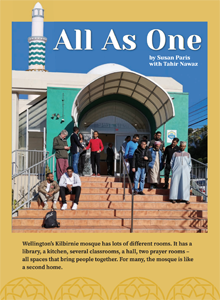
All As One
by Susan Paris with Tahir Nawaz
While Muslims account for a small percentage of New Zealand’s population, their community has had a high profile in recent years. This article provides a brief introduction to the community’s values, as seen through the eyes of four people involved with the Kilbirnie and Hāwera mosques.
-
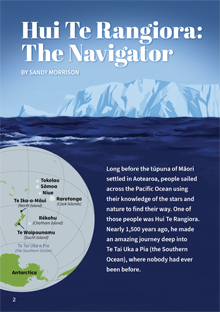
Hui Te Rangiora: The Navigator
by Sandy Morrison
Long before the tūpuna of Māori settled in Aotearoa, people sailed across the Pacific Ocean using their knowledge of the stars and nature to find their way. One of those people was Hui Te Rangiora. Nearly 1,500 years ago, he made an amazing journey deep into Te Tai Uka a Pia (the Southern Ocean), where nobody had ever been before.
-
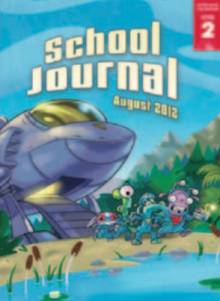
Kūtai
by Ross Calman
As a companion piece to “Kūtai Fritters” from the same Journal, “Kūtai” provides information about the origins, guardians (kaitiaki), uses, and habitats of this shellfish, which could once be found in many parts of New Zealand.
-
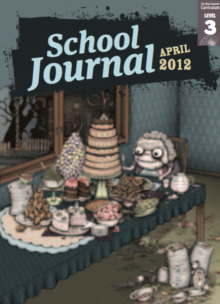
Water Worries
by Rachael McMillan
“Water Worries” combines explanations and persuasive arguments in a report that describes the serious water issues we face in New Zealand. The addition of a short procedural text tells how to make a water harvester at home.
-
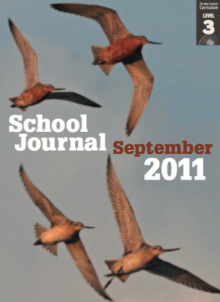
Kūaka
by Bronwen Wall
Every September, the kūaka, or bar-tailed godwit, flies more than 11 600 kilometres from Alaska to New Zealand, and each March to June it flies back again. This engaging article explores its remarkable migration – its departure and arrival periods, how fast it flies, where and on what it feeds in New Zealand, and how it manages to fly for long distances without eating. The article also offers a traditional Māori perspective on kūaka.
-

His Own War – The Story of Archibald Baxter
by David Grant
“His Own War” is a biography of Archie Baxter, a New Zealander who refused to join up and fight in the First World War. His objection to fighting was based on strongly held convictions, and he paid dearly for them.








 Literacy Online home
Literacy Online home
